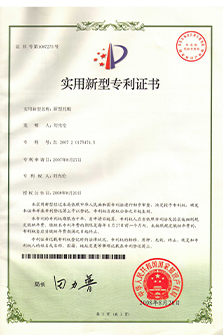 Afrikaans
Afrikaans  Albanian
Albanian  Amharic
Amharic  Arabic
Arabic  Armenian
Armenian  Azerbaijani
Azerbaijani  Basque
Basque  Belarusian
Belarusian  Bengali
Bengali  Bosnian
Bosnian  Bulgarian
Bulgarian  Catalan
Catalan  Cebuano
Cebuano  Corsican
Corsican  Croatian
Croatian  Czech
Czech  Danish
Danish  Dutch
Dutch  English
English  Esperanto
Esperanto  Estonian
Estonian  Finnish
Finnish  French
French  Frisian
Frisian  Galician
Galician  Georgian
Georgian  German
German  Greek
Greek  Gujarati
Gujarati  Haitian Creole
Haitian Creole  hausa
hausa  hawaiian
hawaiian  Hebrew
Hebrew  Hindi
Hindi  Miao
Miao  Hungarian
Hungarian  Icelandic
Icelandic  igbo
igbo  Indonesian
Indonesian  irish
irish  Italian
Italian  Japanese
Japanese  Javanese
Javanese  Kannada
Kannada  kazakh
kazakh  Khmer
Khmer  Rwandese
Rwandese  Korean
Korean  Kurdish
Kurdish  Kyrgyz
Kyrgyz  Lao
Lao  Latin
Latin  Latvian
Latvian  Lithuanian
Lithuanian  Luxembourgish
Luxembourgish  Macedonian
Macedonian  Malgashi
Malgashi  Malay
Malay  Malayalam
Malayalam  Maltese
Maltese  Maori
Maori  Marathi
Marathi  Mongolian
Mongolian  Myanmar
Myanmar  Nepali
Nepali  Norwegian
Norwegian  Norwegian
Norwegian  Occitan
Occitan  Pashto
Pashto  Persian
Persian  Polish
Polish  Portuguese
Portuguese  Punjabi
Punjabi  Romanian
Romanian  Russian
Russian  Samoan
Samoan  Scottish Gaelic
Scottish Gaelic  Serbian
Serbian  Sesotho
Sesotho  Shona
Shona  Sindhi
Sindhi  Sinhala
Sinhala  Slovak
Slovak  Slovenian
Slovenian  Somali
Somali  Spanish
Spanish  Sundanese
Sundanese  Swahili
Swahili  Swedish
Swedish  Tagalog
Tagalog  Tajik
Tajik  Tamil
Tamil  Tatar
Tatar  Telugu
Telugu  Thai
Thai  Turkish
Turkish  Turkmen
Turkmen  Ukrainian
Ukrainian  Urdu
Urdu  Uighur
Uighur  Uzbek
Uzbek  Vietnamese
Vietnamese  Welsh
Welsh  Bantu
Bantu  Yiddish
Yiddish  Yoruba
Yoruba  Zulu
Zulu Conveyor Belt Pulley Types - Comprehensive Guide
Understanding Conveyor Belt Pulley Types
Conveyor belts are an essential component in many industries, facilitating the efficient movement of materials from one point to another. Central to the operation of these belts are pulleys, which drive the belt and maintain its tension. Understanding the different types of conveyor belt pulleys is crucial for selecting the right system for specific applications.
Understanding Conveyor Belt Pulley Types
2. Idler Pulleys Idler pulleys, located along the length of the conveyor system, support the belt and maintain its tension. They do not provide any power but are critical for keeping the belt in place and guiding it along the path. Idler pulleys can be categorized into different types based on their design and intended use, including crowned, flat, and rubberized idlers. Crowned idlers have a tapered shape, which helps center the belt and prevent misalignment. Flat idlers are used for even loading, while rubberized options reduce wear on the belt.
conveyor belt pulley types

3. Return Pulleys These pulleys are found at the tail end of the conveyor system and are responsible for returning the belt back to the drive pulleys. The primary function of return pulleys is to create tension in the belt, ensuring it remains taut during operation. Return pulleys can also include features to minimize dust and material buildup, prolonging the life of the system.
4. Snub Pulleys Snub pulleys are positioned strategically to increase the contact angle between the drive pulley and the belt. This feature enhances the grip of the belt on the drive pulley, allowing for improved traction and efficiency. Snub pulleys are often used in scenarios where the angle of the conveyor exceeds what is standard, helping to maintain optimal performance.
5. Take-Up Pulleys Take-up pulleys are essential for tension adjustment in the conveyor belt system. As the belt experiences wear and elongation, take-up pulleys allow for the adjustment needed to keep the belt tight and properly aligned. This feature is vital for maintaining the performance and longevity of the conveyor system.
In conclusion, the selection of different types of conveyor belt pulleys plays a significant role in the efficiency and effectiveness of material handling systems. By understanding the various types of pulleys, including drive, idler, return, snub, and take-up pulleys, businesses can ensure they choose the right components to meet their operational needs and enhance productivity.
-
Revolutionizing Conveyor Reliability with Advanced Rubber Lagging PulleysNewsJul.22,2025
-
Powering Precision and Durability with Expert Manufacturers of Conveyor ComponentsNewsJul.22,2025
-
Optimizing Conveyor Systems with Advanced Conveyor AccessoriesNewsJul.22,2025
-
Maximize Conveyor Efficiency with Quality Conveyor Idler PulleysNewsJul.22,2025
-
Future-Proof Your Conveyor System with High-Performance Polyurethane RollerNewsJul.22,2025
-
Driving Efficiency Forward with Quality Idlers and RollersNewsJul.22,2025





























